Trapa L.
European water chestnut, horn chestnut, saligot, jesuit nut, water caltrope
Lythraceae
Ludwigia (rarely confused)
Eurasia, northern Africa
Trapa natans L. (with numerous geographical varieties)
northeastern United States, Canada
The high weed potential of this plant is widely accepted. Trapa is a noxious weed and a prohibited import in many countries.
attached stem plantstem plant:
(n) (a term used in the aquarium and pond plant trade) having an elongate stem (as opposed to a compact stem)
 with apicalapical:
with apicalapical:
(adj) of the apex
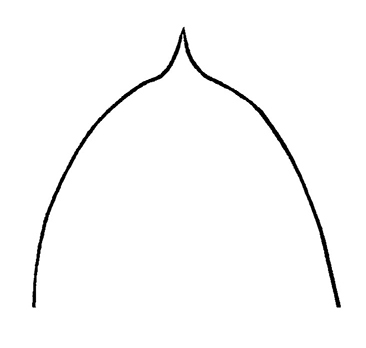 , floating rosetterosette:
, floating rosetterosette:
(n) a radiating cluster of leaves, usually close to the ground at the base of a plant

Annual. Stem attached to substrate, submersedsubmersed:
see submerged
 , elongate, relatively unbranched. Leaves dimorphic: submersedsubmersed:
, elongate, relatively unbranched. Leaves dimorphic: submersedsubmersed:
see submerged
 leaves oppositeopposite:
leaves oppositeopposite:
(adj) (of leaves) two leaves per node; in pairs on opposite sides of an axis
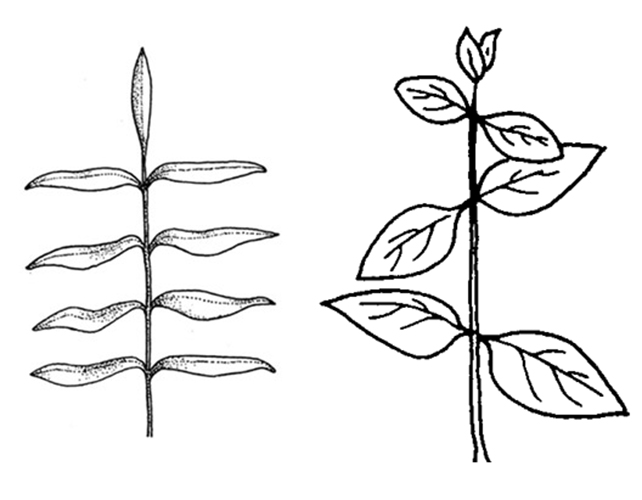 , sessilesessile:
, sessilesessile:
(adj) attached directly, without a stalk
 , linear; floating and emergentemergent:
, linear; floating and emergentemergent:
(adj) (syn. emersed) with parts raised out of the water; extending up out of the water
 leaves alternatealternate:
leaves alternatealternate:
(adj) (of leaves) bearing one leaf per node; placed singly on the stem at different heights
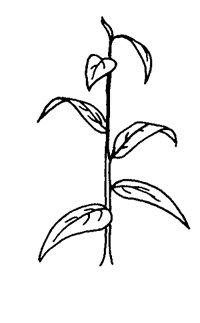 in apicalapical:
in apicalapical:
(adj) of the apex
 rosetterosette:
rosetterosette:
(n) a radiating cluster of leaves, usually close to the ground at the base of a plant
 , petiolepetiole:
, petiolepetiole:
(n) the stalk of a leaf
 often swollen with spongy aerenchymaaerenchyma:
often swollen with spongy aerenchymaaerenchyma:
(n) plant tissue with large, gas-filled intercellular spaces that facilitates gaseous exchange and maintains buoyancy
 , leaf bladeblade:
, leaf bladeblade:
(n) (syn. lamina) the flat, expanded part of a leaf, frond, or petal (excluding, e.g., the petiole)
 rhombic, venationvenation:
rhombic, venationvenation:
(n) the arrangement of veins in a leaf
 pinnate, marginmargin:
pinnate, marginmargin:
(n) edge; rim
 serrateserrate:
serrateserrate:
(adj) (of a leaf margin) bearing sharp teeth pointing forward or to the apex
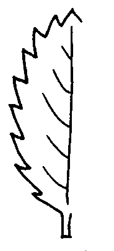 . Submersedsubmersed:
. Submersedsubmersed:
see submerged
 linear leaves, once abscised, are replaced with green pinnately-branched adventitiousadventitious:
linear leaves, once abscised, are replaced with green pinnately-branched adventitiousadventitious:
(adj) of an organ growing where it is not normally expected, e.g., roots growing from a stem
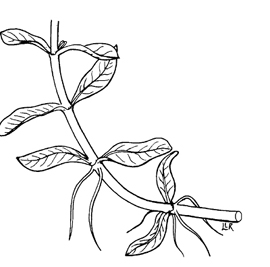 roots that develop from leaf scar. Inflorescenceinflorescence:
roots that develop from leaf scar. Inflorescenceinflorescence:
(n) the arrangement of flowers on the floral axis
 a solitary, bisexualbisexual:
a solitary, bisexualbisexual:
(adj) having both male and female sexual reproductive structures on one individual or in one flower
 flower, borne on short axillaryaxillary:
flower, borne on short axillaryaxillary:
(adj) in, of, or produced from an axil
 pedicelpedicel:
pedicelpedicel:
(n) the stalk of a single flower in an inflorescence, or of a grass spikelet
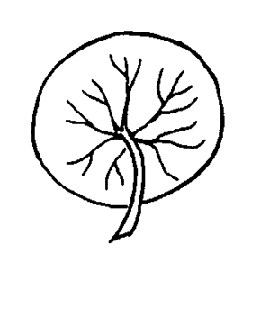 . Sepals 4, these developing into 2 to 4 distinctive, but highly polymorphicpolymorphic:
. Sepals 4, these developing into 2 to 4 distinctive, but highly polymorphicpolymorphic:
(adj) displaying multiple forms (of, e.g., an organ) in one organism
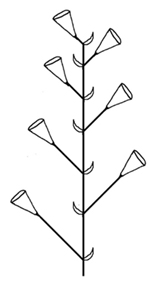 spines on fruit; petals 4, white to purple. Dispersal by seed.
spines on fruit; petals 4, white to purple. Dispersal by seed.
still waters of lakes, ponds, and upper regions of estuaries
The common name water chestnut is also applied to Eleocharis dulcus (Burm.) Hensch. and can lead to some confusion. Both species have edible seeds or tubers. Trapa natans is considered threatened in some regions of its native distribution (e.g. Germany, Belgium, Holland, and Sweden) but is a troublesome weed in much of its adventiveadventive:
(adj) introduced, non-native, or added; introduced and naturalized
 distribution. The variability of this species, especially regarding seed shape, has led to multiple species being recognised across its broad distribution. The genus was recently transfered to the family Lythraceae from Trapaceae.
distribution. The variability of this species, especially regarding seed shape, has led to multiple species being recognised across its broad distribution. The genus was recently transfered to the family Lythraceae from Trapaceae.